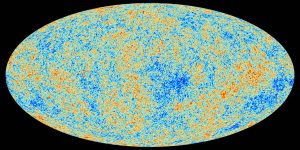Are we the centre of the universe?
No one knows where the centre of the universe is. The old sages used to insist that the Earth was. Indeed, they went further: the Earth was flat, and the sun, the stars and planets orbited around it. While we know this is not true, relatively speaking the earth is the centre, because it is the viewpoint of our human experience.

Another thing is this business about north and south, up and down. Most people accept a view of the world with the North Pole at the top because the cartographers who drew up our modern maps lived in the northern hemisphere. And they used the North Star to aid navigation. Their civilisations did most of the exploring from the seventeenth century onwards, so had a foot in the door in deciding how things were printed and how their children were taught. And since most of them were also from Europe, that’s where their maps were centred. When you think about it all this is completely arbitrary. I mean, imagine if you were on Uranus you would have more of a problem because the planet – from our point of view – is revolving vertically; that is to say, its poles are at right angles to its plane of orbit. You would see a pretty weird sky.
Now, imagine something else. Say you are lazing around, having a picnic with your family and you are sitting on a blanket in a park. You are not moving, right? OK, so you pick up a sandwich and you may cross your legs, but you are basically sitting still on the blanket. But in reality you are moving. In fact you and your family – all of us – are moving very fast indeed. To begin with the Earth revolves once every 24 hours (OK, 23 hours 56 minutes, to be more accurate), and its circumference at the equator is 40 075kms. Simple maths shows us that someone there is moving at 1 675kms an hour (or 465 metres a second) while they are lying around getting sunburnt. As you move north or south you slow down, relatively speaking, as the distance around the globe shrinks (everyone gets a 24-hour day so they will travel a bit slower in London, say, than in Paris). Now at either pole you wouldn’t be moving at all, well not much. If you stood still, apart from freezing your butt off, you would just revolve on the spot, once every 24 hours.
The thing is, whether you are at the equator going almost 1 700kms an hour or turning on the balls of your feet at the North Pole you would still not be moving at all; everything else is moving: the sun, the planets and the stars, and so on. And there’s more; the Earth, of course, is orbiting the sun. That takes a year, or 365 days and almost 6 hours to complete. If its mean distance from the sun is 149 597 870kms then a quick calculation gives us an orbital distance of 940 329 468kms. To do that in a year you would be travelling at about 107 270kms an hour. And you are still lazing around in a park eating sandwiches.
But even that isn’t the end of it. We are locked in an interminable ballet as we orbit the sun, and we therefore move with the sun (and all the planets) as it orbits around the Milky Way – our home galaxy. That orbit, I think they call the “Galactic Year”, is equal to about 225 million earth years. They reckon the sun is about 8.33 kpc (kiloparsecs) from the galactic centre – that’s about 27 000 light years. These distances are a best guess at the moment, but they do suggest the sun must be travelling at about 828 000kms/hr. That’s pretty fast (230 kilometres a second).
And we are not there yet because, in its turn the Milky Way Galaxy is travelling through space. Its speed is difficult to determine because it depends on its velocity relative to a given object in space. If we knew where the centre of the universe was, only then could we truly suggest a more accurate speed. Instead, astronomical sages have come up with a range of speeds compared to various objects. For example, the Milky Way is travelling 600kms per second towards Hydra Centaurus; towards Virgo it is moving at 300kms/s; and towards Andromeda (our nearest galaxy) at 130 kms/s. Personally, I would go with the first because Hydra Centaurus is the biggest – one reason it is also referred to as “The Great Attractor”, and which is pulling us at about 2.16 million kilometres an hour.
The combined speed of all this is mind-boggling. Thank goodness for gravity, which sticks us safely on solid ground (I’d hate to whizz off suddenly into a vacuum towards the Great Attractor).
And all this is really a roundabout way of saying, since we are still sitting enjoying our picnic, therefore we cannot be moving. So it is the rest of the universe that is moving relative to Earth and so, from our point of view, we must be the centre of the universe.
By Nigel Benetton, science fiction author of Red Moon Burning and The Wild Sands of Rotar
Last updated: Friday, 3rd April 2020